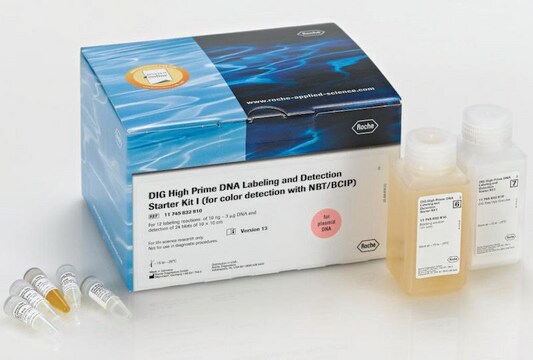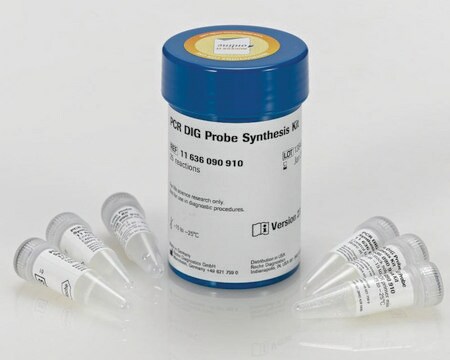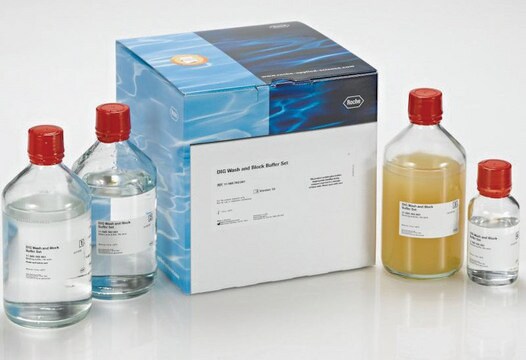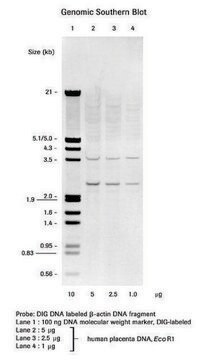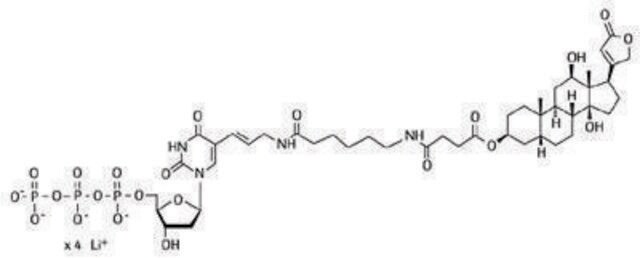11585614910
Roche
DIG-High Prime DNA Labeling and Detection Starter Kit II
sufficient for 12 labeling reactions (10 ng to 3 μg per assay), sufficient for 24 blots (blots of 100 cm2)
Synonym(s):
DIG system, dna labeling
About This Item
Recommended Products
usage
sufficient for 12 labeling reactions (10 ng to 3 μg per assay)
sufficient for 24 blots (blots of 100 cm2)
Quality Level
manufacturer/tradename
Roche
greener alternative product characteristics
Designing Safer Chemicals
Learn more about the Principles of Green Chemistry.
sustainability
Greener Alternative Product
greener alternative category
storage temp.
−20°C
General description
Application
- in Southern blots
- in northern blots
- in dot blots
- in colony and plaque hybridizations
- for all types of filter hybridization
- for single-copy gene detection in total genomic DNA, even from organisms with high complexity, for example, human, barley, and wheat
Packaging
Principle
Other Notes
Kit Components Only
- DIG-High Prime 5x concentrated
- DIG-labeled Control DNA, pBR328 (linearized with Bam HI) 5 μg/ml
- DNA Dilution Buffer
- Anti-Digoxigenin-AP Conjugate antibody
- CSPD ready-to-use
- Blocking Solution 10x concentrated
- DIG Easy Hyb Granules
Signal Word
Warning
Hazard Statements
Precautionary Statements
Hazard Classifications
Eye Irrit. 2 - Skin Irrit. 2
Storage Class Code
12 - Non Combustible Liquids
WGK
WGK 3
Flash Point(F)
does not flash
Flash Point(C)
does not flash
Choose from one of the most recent versions:
Already Own This Product?
Find documentation for the products that you have recently purchased in the Document Library.
Customers Also Viewed
Articles
Digoxigenin (DIG) labeling methods and kits for DNA and RNA DIG probes, random primed DNA labeling, nick translation labeling, 5’ and 3’ oligonucleotide end-labeling.
Our team of scientists has experience in all areas of research including Life Science, Material Science, Chemical Synthesis, Chromatography, Analytical and many others.
Contact Technical Service